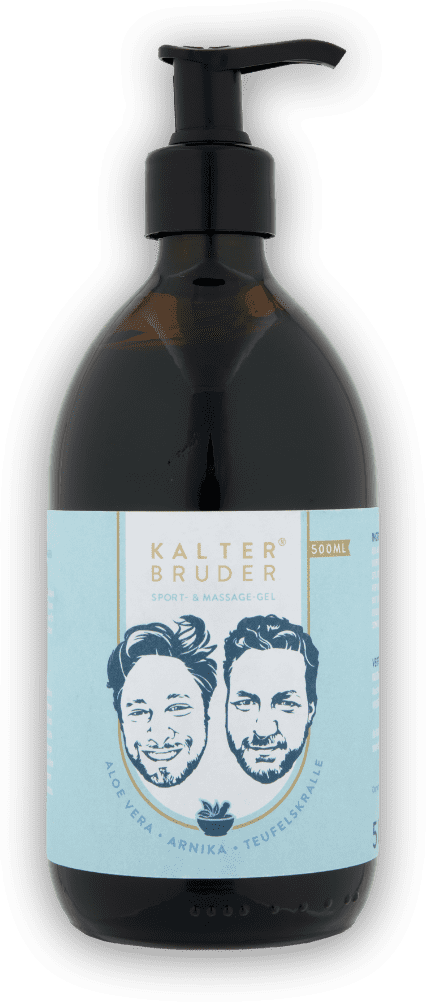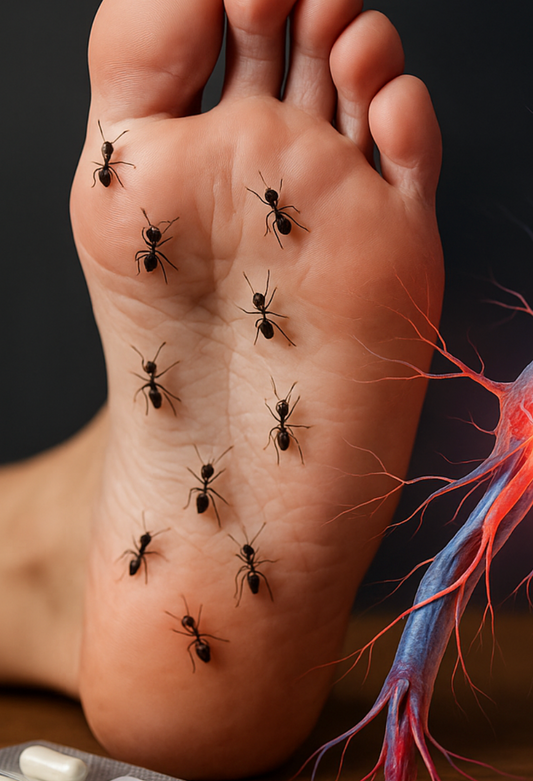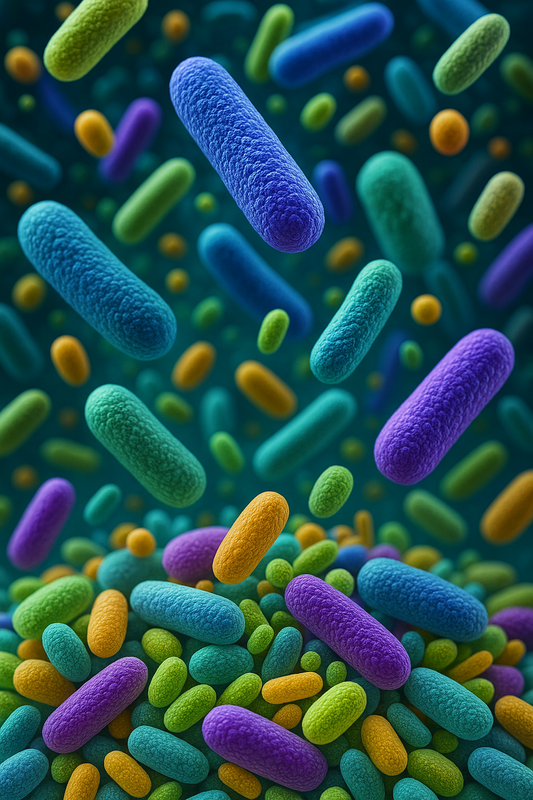Why it is disappearing from many supermarkets and why your body needs it more than ever
In recent decades, we have seen an alarming change on our supermarket shelves: whole grain products have increasingly been replaced by refined, nutrient-poor alternatives. Although there has recently been a renewed trend towards more whole grain products in many European countries, including Germany, this is usually limited to a few product groups from the "organic section".
You have the choice – every day.
Your body needs whole grains more urgently than ever - the explosive numbers of diabetes, cardiovascular problems, nerve damage and many other "new" widespread diseases are frightening and we should slowly be asking ourselves why this is! Whole grain products play a key role in this and urgently need to be back on our tables! In this article we explain why this is the case and what positive effects whole grains have on your health. We examine alternatives to arsenic-contaminated whole grain rice and show you delicious recipes for switching to whole grains in your everyday life.
Whole grains prolong life
A groundbreaking study from the renowned Harvard School of Public Health impressively shows that regular consumption of whole grain products significantly reduces the risk of cardiovascular disease and can even extend your lifespan. The study was published in 2015 and is based on data from two large, long-term cohort studies: Both studies together followed over 74,000 women and 43,000 men over a period of more than 25 years. The participants were regularly asked about their eating habits, including the consumption of whole grain products.
The results were impressive: people who ate a daily serving of whole grains had a 25% lower risk of dying from cardiovascular disease compared to those who consumed little or no whole grains. In addition, there was a 9% lower risk of premature death from other causes with higher whole grain consumption.
How much healthier is whole grain? A deeper look into the processes of your body
Whole grain products are healthier than their refined counterparts in several ways. Whole grains contain all three parts of the grain: the germ, the endosperm and the bran. These three components provide a wealth of nutrients that are missing in refined products and, when combined, are particularly valuable for health.
The germ is the heart of the grain - this is where most of the vitamins, minerals and healthy fats are found. It also contains antioxidants and secondary plant substances that protect the body from free radicals. The endosperm is the largest part of the grain and mainly provides carbohydrates and proteins that are important for the body's energy supply. Finally, the bran is the outer layer of the grain and is rich in fiber that promotes digestion and stabilizes blood sugar levels. In non-whole grain products, only the nutrient-poor endosperm is used - if this is not organically grown, the plant is usually bred in such a way that it is particularly large and contains flour.
Why is whole grain healthier than refined products?
A key benefit of whole grains is their high fiber content. Fiber is indigestible carbohydrates that pass through your digestive tract without being broken down. It plays a crucial role in regulating your blood sugar levels and promoting healthy intestinal flora. A diet rich in fiber can reduce the risk of colon cancer and help prevent chronic constipation.
Whole grains are also rich in B vitamins, particularly B1 (thiamine), B2 (riboflavin) and B6, all of which are essential for your energy metabolism. These vitamins support the conversion of carbohydrates into energy and promote the health of your skin, hair and eyes. In addition, whole grains contain important minerals such as iron, zinc and magnesium, which are necessary for blood sugar control, nerve function and muscle building.
Whole grains are also rich in antioxidants and phytochemicals that help neutralize free radicals in your body. These unstable molecules can cause cell damage and increase the risk of chronic diseases like cancer. By eating whole grains regularly, you can reduce the number of these harmful molecules and protect your cells.
Another important aspect of whole grains is their effect on blood sugar levels. The fiber contained in whole grains ensures that the carbohydrates enter the bloodstream more slowly. This leads to more stable blood sugar levels and reduces the risk of type 2 diabetes. Stable blood sugar levels are also important for controlling your appetite and can help prevent cravings.

Which whole grain products are best for me?
Choosing the right whole grain can play a big role in your health, but what are the best options and why should you choose certain grains? Let's take a closer look.
Why is arsenic a problem in rice?
Rice, especially brown rice, can contain arsenic due to the way it is grown. Arsenic enters the rice plants via groundwater and accumulates mainly in the outer layers of the grain, which remain intact in brown rice. Arsenic contamination is a growing problem that has been known for years but has only come into greater focus in recent decades. Since arsenic is a carcinogenic heavy metal, the consumption of rice should be limited, especially by children and pregnant women.
There are many healthy alternatives to rice that are less polluted and are also regional products. Grains such as green spelt, spelt, oats and millet not only offer a higher nutrient density, but also the advantage of being grown in Europe and therefore having a lower ecological impact. These grains are rich in fibre, vitamins and minerals and can be used in a variety of dishes.
Overview of various whole grain products:
|
Grain |
nutrients/ 100g |
special features |
Suitable for |
|
Spelt |
335 kcal, 12g protein, 10g fiber |
Rich in protein, high content of minerals such as magnesium and iron |
bread, pasta, pastries |
|
Oats |
389 kcal, 17g protein, 11g fiber |
Rich in beta-glucan, a soluble fiber that lowers cholesterol levels |
muesli, porridge, bread |
|
rye |
259 kcal, 9g protein, 15g fiber |
High content of soluble fiber, supports intestinal health |
bread, pumpernickel |
|
green spelt |
311 kcal, 13g protein, 9g fiber |
Good source of magnesium and iron, high protein content |
soups, stews, patties |
|
barley |
354 kcal, 10g protein, 17g fiber |
Contains beta-glucan, supports blood sugar control and lowers cholesterol levels |
soups, risotto, salads |
|
millet |
360 kcal, 11g protein, 9g fiber |
Gluten-free, rich in iron and silicon, strengthens skin, hair and nails |
salads, purees, side dishes |
|
bulgur |
342 kcal, 12g protein, 18g fiber |
Fast cooking, high in proteins and minerals |
salads, side dishes, fillings |
|
emmer |
340 kcal, 15g protein, 9g fiber |
Ancient grain, high content of antioxidants and trace elements |
bread, pasta, risotto |

Freshly ground instead of packaged – Vitamin E against free radicals
A relevant study was conducted by SW Ranhotra et al. and published in the Journal of Food Science in 1989. This study investigated the stability of vitamin E (tocopherol) in freshly milled wheat flour and observed that the vitamin E content decreases significantly when the flour is exposed to oxygen and light. A decrease of up to 50% in vitamin E content was observed within the first 24 to 48 hours after milling.
Vitamin E is an essential fat-soluble vitamin that plays a key role in protecting cells from oxidative stress. It acts as an antioxidant that neutralizes free radicals that can be created by environmental factors such as air pollution, UV radiation, and smoking. These free radicals can damage cells and contribute to chronic diseases such as cardiovascular disease and cancer. In addition, vitamin E supports the immune system by enhancing the function of immune cells, which is especially important for fighting infections. It also plays a role in skin health by protecting the skin from damage caused by UV radiation and promoting wound healing. Adequate levels of vitamin E are also important for eye health, as it can reduce the risk of age-related macular degeneration. Overall, vitamin E plays a key role in maintaining health and protecting the body from a variety of diseases and premature aging.
You can find a mill in any organic supermarket - you just buy a pack of whole grains and go to the mill to grind your fresh flour. And of course you get the best quality grains there.
Whole Grain and Health: A Country Comparison
Whole grain products are an important part of a healthy diet and play a crucial role in the prevention of chronic diseases such as cardiovascular disease and type 2 diabetes. The differences in the consumption of whole grain products between different countries have a significant impact on the health of the population and life expectancy. A comparison of the data from the USA, Great Britain, Germany, Finland and Sweden illustrates these connections.
In countries such as the US and the UK, where whole grain consumption is comparatively low, rates of diet-related disease are particularly high. In the US, life expectancy is around 77 years, while the prevalence of cardiovascular disease is 219.4 cases per 100,000 people and the diabetes rate is 10.5%. These health problems are also widespread in the UK, with a life expectancy of around 80 years and a diabetes prevalence of 6.7%.
Scandinavia is the leader
In comparison, countries such as Finland and Sweden, which have high whole grain consumption, have significantly better health indicators. In Finland, life expectancy is 82 years and the cardiovascular death rate is only 70 cases per 100,000 inhabitants. Diabetes prevalence is also lower at 5.6%. Sweden shows similar patterns, with a life expectancy of 83 years and a cardiovascular death rate of only 65 cases per 100,000 inhabitants. Germany, with moderate whole grain consumption, is in the middle of the pack in terms of health outcomes. Life expectancy here is 81 years, the cardiovascular death rate is 109 cases per 100,000 inhabitants, and diabetes prevalence is 7.2%.
These figures show how much the consumption of whole grains can affect health. Countries with higher whole grain consumption show a lower incidence of cardiovascular disease and diabetes, as well as a higher life expectancy, which underlines the importance of whole grains in the prevention and promotion of a healthy lifestyle.
|
country |
life expectancy |
whole grain consumption |
Cardiovascular system* |
Diabetes* |
|
USA |
77 |
Small amount |
219.4 |
10.5 |
|
Great Britain |
80 |
Small amount |
150.0 |
6.7 |
|
Germany |
81 |
Moderat |
109.0 |
7.2 |
|
Finland |
82 |
High |
70.0 |
5.6 |
|
Sweden |
83 |
High |
65.0 |
4.8 |
*Cardiovascular: Shows corresponding deaths per year per 100,000 inhabitants
*Diabetes: Shows the proportion of type 2 diabetes patients (in %) in the population
Practical tips for everyday life: How to integrate more whole grains into your diet
Now that you know the numerous health benefits of whole grains, the question is: How can you incorporate more whole grains into your daily routine? The good news is that there are many easy ways to incorporate whole grains into your diet.
- Replace white flour products : Start by replacing white bread, pasta and rice with whole grain options. Whole grain pasta and bread are now available in every supermarket and offer an easy way to start a healthier diet.
- Whole grain breakfast : Start your day with whole grain muesli or oatmeal porridge. These not only keep you full for a long time, but also provide you with important nutrients that will get your day off to a good start.
- Baking with wholemeal flour : Use wholemeal flour instead of white flour when baking. Not only does it give your baked goods a nuttier taste, it also makes them healthier. Spelt flour is particularly good as it has a high nutrient density and is versatile.
- Whole grain snacks : Instead of refined snacks, opt for whole grain crackers or bars. These are high in fiber and help keep your blood sugar levels stable. Not only are they delicious, but they're also a quick and healthy snack.
- Experiment in the kitchen : Try new recipes with different types of whole grains. Green spelt patties, bulgur salads or barley risotto are not only delicious, but also offer a healthy change on your plate. Experiment with the different textures and flavors of the whole grains to find out which ones you like best.
Conclusion: What you can take away for yourself
Whole grains are an essential part of a healthy diet. They provide a variety of nutrients your body needs to function optimally and can help reduce your risk of chronic disease and increase your life expectancy. If you suffer from restless leg syndrome or polyneuropathy, you should be especially careful to include whole grains in your diet, as they provide important nutrients for nerve function.
Remember that not all grains are created equal - choose the whole grain options that best suit your lifestyle and taste. And finally, don't be tempted by processed foods that offer little nutritional value. Instead, opt for whole grains that provide your body with the energy and nutrients it needs to stay healthy and vital. By making these simple changes to your diet, you can not only improve your health, but also have a positive impact on your life and well-being.
Finally: 5 delicious whole grain recipes
Here are five great recipes with whole grain products that are particularly suitable for patients with polyneuropathy and restless legs syndrome (RLS)
1. Oatmeal porridge with berries and nuts
Cook one cup of oatmeal in two cups of milk or a plant-based alternative. Add a pinch of cinnamon, a teaspoon of honey and a handful of fresh berries such as blueberries or raspberries. Garnish the porridge with chopped nuts such as almonds or walnuts for extra texture and flavor. Oats are rich in fiber, especially beta-glucan, which stabilizes your blood sugar levels and has anti-inflammatory properties. This is especially important if you have polyneuropathy, as stable blood sugar levels can prevent nerve damage. Oats also contain iron, magnesium and vitamin B6, which support your nerve function and can help relieve symptoms of RLS.

2. Green spelt bolognese
Cook a cup of green spelt according to the package directions. Prepare a bolognese sauce with a mixture of chopped vegetables such as carrots, onions and celery and tomato paste. Add the cooked green spelt and simmer for about 20 minutes. Serve the bolognese over whole wheat pasta or zucchini noodles. Green spelt is an excellent source of magnesium and antioxidants that support your nerve function and reduce oxidative damage. This is especially helpful if you suffer from polyneuropathy, as it can help relieve nerve pain. The high magnesium content also helps relax your muscles and relieve the uncomfortable symptoms of restless legs syndrome.

3. Barley salad with vegetables and feta
Boil a cup of barley until tender. Mix the cooked barley with chopped vegetables such as cucumbers, tomatoes and peppers and crumbled feta cheese. Season the salad with olive oil, lemon juice, salt and pepper. Let the salad sit for about 30 minutes before serving to allow the flavors to meld. Barley is rich in fiber and vitamin B complex, which promote healthy digestion and support your nervous system. This is especially beneficial for polyneuropathy patients, as the B vitamins can promote nerve regeneration. The high potassium and magnesium content in barley can help you relieve the symptoms of RLS by reducing muscle spasms and supporting nerve function.

4. Rye bread with avocado and egg
Toast a slice of rye bread and spread half a mashed avocado on it. Place a poached egg on top and season with salt, pepper and chili flakes to taste. Optionally, you can also add a few tomato slices and fresh herbs. Rye is rich in fiber, which stabilizes your blood sugar levels and thus helps prevent nerve damage in polyneuropathy. Rye also contains tryptophan, an amino acid that promotes the production of serotonin and thus can help improve your sleep - an important factor if you suffer from RLS, as restless legs often occur at night and disrupt your sleep.

5. Millet and vegetable pan
Cook one cup of millet in two cups of vegetable stock until tender. In a pan, fry diced vegetables such as zucchini, peppers and carrots in a little olive oil. Mix the cooked millet into the vegetables and season everything with herbs and spices to taste. Finally, you can sprinkle some grated Parmesan or feta cheese on top. Millet is an excellent source of iron and magnesium, two minerals that are essential for your nerve function and muscle relaxation. If you suffer from polyneuropathy, iron intake is especially important because iron deficiency can worsen nerve damage. The magnesium in millet can also help relax your muscles and relieve the uncomfortable symptoms of RLS.

















